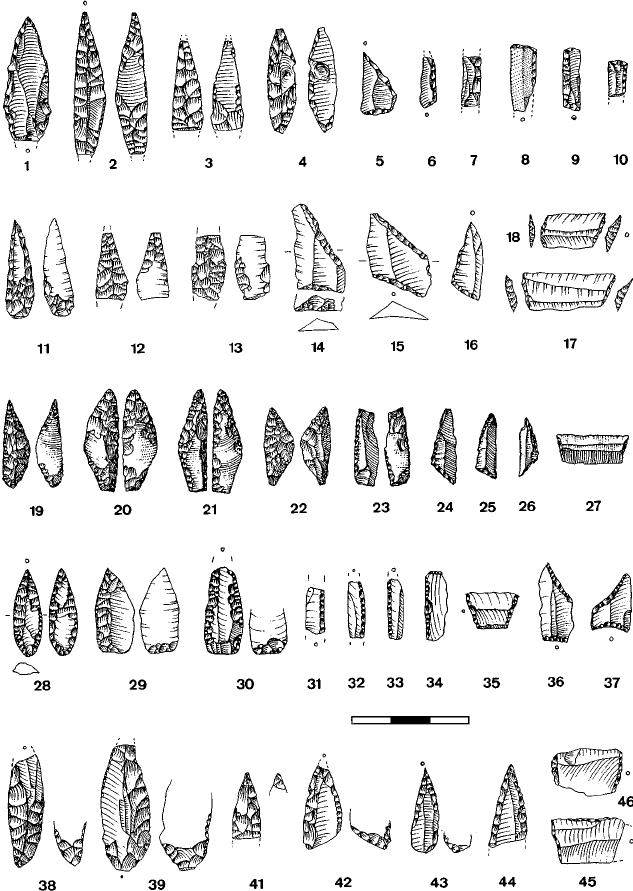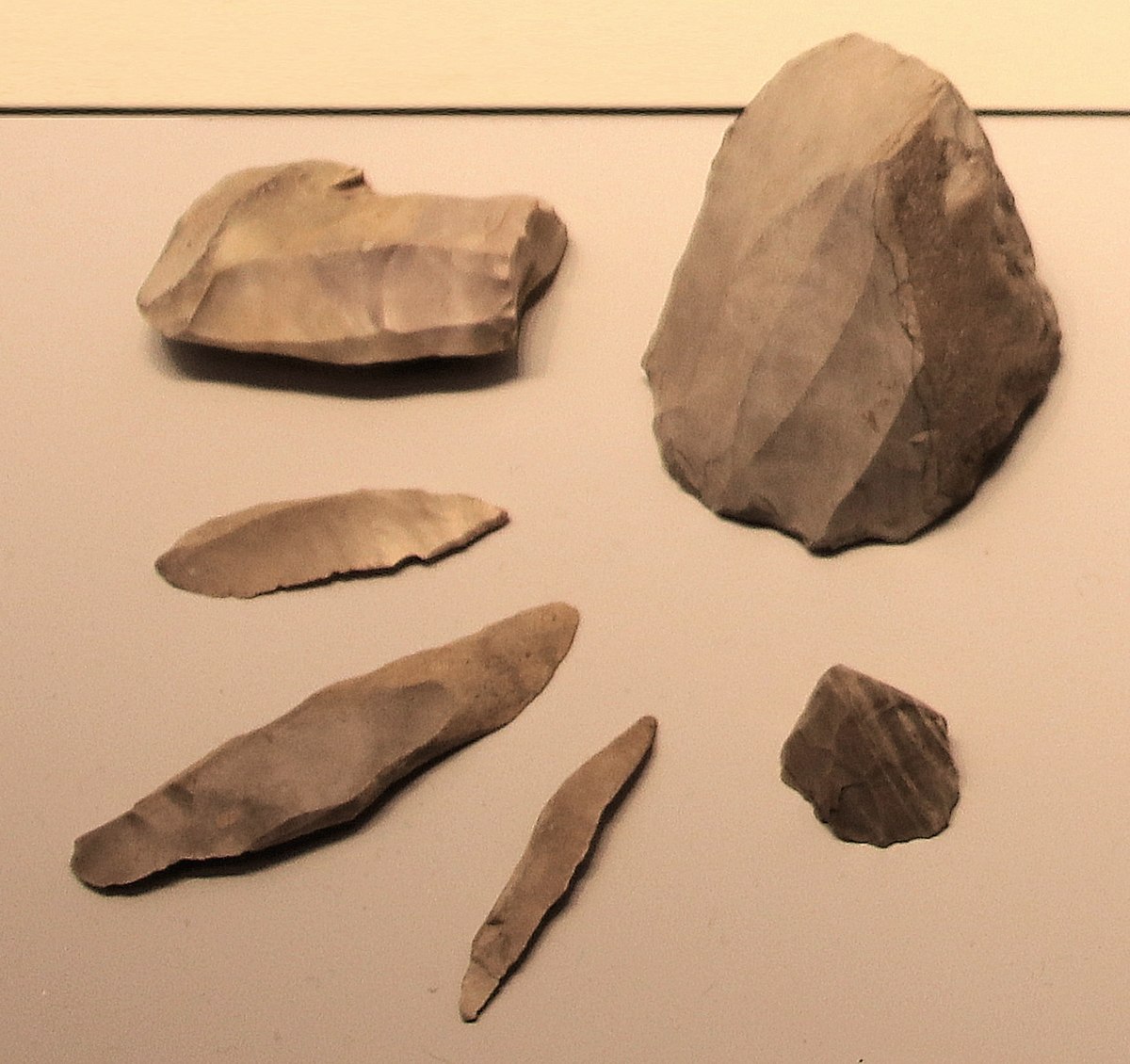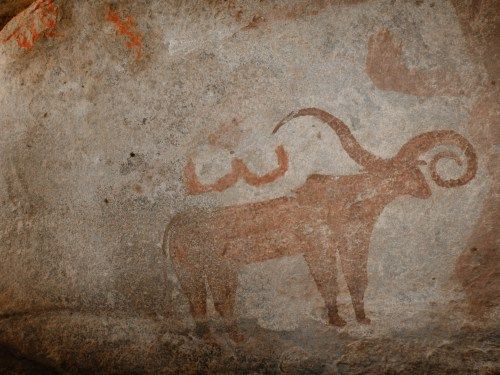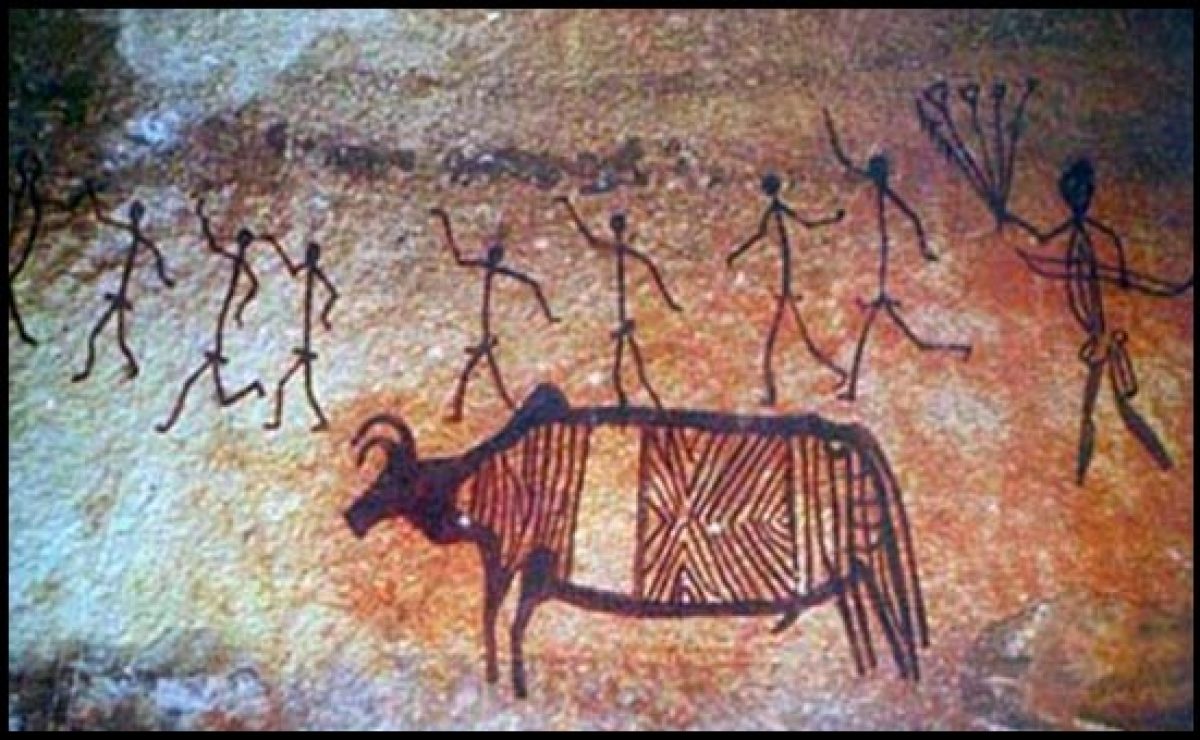In the previous section, we learned some important facts about the Palaeolithic Age. Let us have a look at some important of the Mesolithic age. The era between 10,000 and 6,000 BC is called a Mesolithic age. Sometimes it is also called as Late Stone Age. The transition from the Palaeolithic period to the Mesolithic age is marked by the transition from the Pleistocene period to Holocene and favorable changes in the climate.
Climate played an important role in this era as the Ice age initiated in the Palaeolithic age seems to be ended as the climate became much warmer and humid and there was the expansion of flora and fauna contributed by increased rainfall. This warmer climate led to the availability of new resources to humans.
Tools of Mesolithic Era
The Mesolithic age tools are smaller in size and better in finishing than the Palaeolithic age and are called Microliths. These microliths are tiny tools of one to five centimeters in length, made by blunting one or more sides with steep retouch. The main tool types of this era were backed blades, obliquely truncated blades, points, crescents, triangles, and trapezes. Some microliths were used as components of spearheads, arrowheads, knives, sickles, harpoons, and daggers.

Microliths were fitted into grooves in bone, wood, and reed shafts and joined together by natural adhesives like gum and resin. The Bored stones, which had already appeared during the upper Palaeolithic, became common during this, and the Neolithic and Chalcolithic periods. Shallow querns and grinding stones are also found at several sites. These new technological elements lead to enhanced efficiency in hunting, collection, and processing of wild plant foods.

Domestication of Plants and Animals: The economy in the early period of the Mesolithic age was based on hunting, fishing, and food gathering. The earliest evidence of domestication of animals has been found in Adamgarh in Madhya Pradesh and Bagor in Rajasthan. The earliest examples of cultivation of crops around 7000-6000 years back have been found near Sambhar Lake in Ajmer Rajasthan, Mehargarh in Pakistan, etc. Agriculture had not fully developed by was the only prototype of the domestication of crops and animals.
The first animals to be domesticated were dogs, cattle, sheep, and goats. The first plants which were cultivated were wheat and barley. In the humid lands, extending from the middle Ganga valley to China and Southeast Asia, rice cultivation and domestication of the pig were accomplished probably around the same time because rice and pig existed in the wild form in this region. Domesticated animals proved to be useful for many purposes such as for meat, milk, hide, agricultural operations, and transport.
Sedentary settlements
The favorable climate, better rainfalls, warm atmosphere, and increased food security led to a reduction in nomadism to seasonally sedentary settlement and increased population. They moved to new areas such as nearby rivers which provided water for their settlements. The first human colonization in the Ganga plains took place during this period.
Burying of dead bodies
The first evidence of deliberate disposal of the dead comes from the Mesolithic Era. Mesolithic human burials have been found at Bagor in Rajasthan, Langhnaj in Gujarat, and Bhimbetka in Madhya Pradesh. The dead were buried in graves both in an extended and crouched position. In some cases, two individuals were buried in a single grave. The dead were occasionally provided with the grave offerings which include chunks of meat, grinding stones, stone, bone and antler ornaments, and pieces of haematite.
Mesolithic Age Art

The Mesolithic man was an evident lover of art which can be concluded from the painting (found in founding inhabited and uninhabited shelters) in several thousand rock shelters in the Vindhyan sandstone hills in central India. The paintings are made in red and white pigments which were made from the nodules found in rocks and earth. The matters of the painting are mostly wild animals and hunting scenes. These Rock arts are paintings and engravings done in rock shelters or natural caves.
Important Mesolithic Sites: Bagor (Rajasthan) is almost the largest Mesolithic site in India. Tilwara, Pachpadra basin, and Sojat Area are other major Mesolithic sites in Rajasthan. Sarai Nahar Rai, Morhana Pahar, and Lekkahia (UP) are important Mesolithic sites. Bhimbetka along with Adamgarh, Chaturbhujnath Nala are major Mesolithic sites in Madhya Pradesh.

